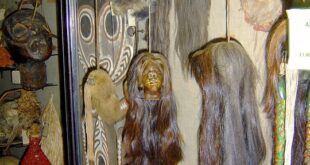Understanding Human Evolution: An Introduction to Paleoanthropology
The Fascinating World of Paleoanthropology
As humans, we often wonder about our origins and the long journey that we have taken to become the dominant species on this planet. Thankfully, paleoanthropology is here to unveil the mysteries of human evolution for those curious enough to delve into the past.
What is Paleoanthropology?
Paleoanthropology is a field of study dedicated to understanding the evolutionary history of hominins (humans and their close relatives) back to their last common ancestor with the great apes. Scientists in this field use different disciplines such as genetic analysis, comparative anatomy, archaeology and geology to piece together the story of human evolution.
The Evolutionary Timeline
Hominin Families
One of the highlights of paleoanthropology is the discovery of the different hominin families that have long been extinct. Each family has left behind clues that give insight into their way of life and their disappearance. They include:
The Geological Time Scale
Paleoanthropology also relies on the geological time scale. Our planet’s history can be segmented into different time periods dominated by distinct geological events. These periods inform our understanding of how each set of hominins lived and evolved. Below is a graphic representation by the International Commission on Stratigraphy.
The Role of Paleoanthropology Today
Technology Boosting Discoveries
The pace of new discoveries in paleoanthropology is accelerating, thanks to innovative technological advancements combined with more extensive exploration in new regions. With powerful technologies such as genetic sequencing, laser scanning, and radiocarbon dating have done a great deal to propel discovery forward in paleoanthropology.
Influence on Modern Science and Research
The influence of paleoanthropology in modern science and research cuts across gender, race and borders. Today, we find that researchers, scholars, and scientists are more committed than ever to find answers lurking in the distant past. Many schools also include paleoanthropology in the curriculum, motivating students to explore human evolution even further.
Conclusion
Paleoanthropology is an incredibly interesting area of study where we can gaze beyond what culture and prophecies have taught and unmask the evolution of humankind. By studying nuclear DNA, traditional comparative anatomy resources such as skeletal remains galore, scientists work to unveil the wonders of the human evolution backstory every day. For students who are curious and possess a keen interest in bringing these discoveries even further through research, global travel, or public awareness education, paleoanthropology paves the way to discovery for all passionate to pursue it.
 Mind Uncharted Explore. Discover. Learn.
Mind Uncharted Explore. Discover. Learn.
